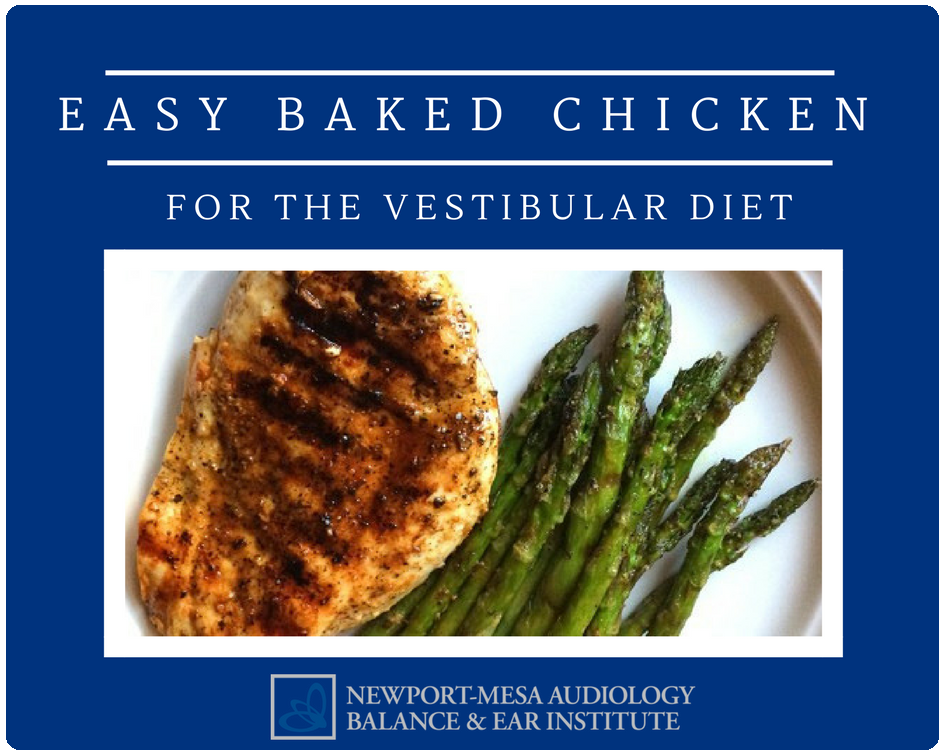A majority of the time, our first introduction to a balance patient is tied to an issue they’ve had in the past, or are currently experiencing. Our passion is to help them anyway we can – by identifying the issue correctly, evaluating and thorough testing, provide a correct diagnosis. Our approach is to work together with each patient on a course of action that involves a treatment plan, goals and positive outcomes.

But there’s plenty you can do outside of our Institute to introduce and manage a vestibular diet.
Certain foods are better than others to help build and support strong nerve cells and cell membranes. These vestibular-friendly foods contain fatty acids with anti-inflammatory qualities needed for the proper function of blood vessels.
But they also contain vitamins like riboflavin and magnesium that benefit all cells. That’s important because our cells need energy to carry us through our daily activities. When cells within our brain, inner ear and muscles are impaired and not functioning to their full potential, we may be more prone or vulnerable to experience more symptoms.
By suggesting a more thoughtful diet, we often can help patients help themselves to improve their own metabolism. And that may provide an added energy boost in a time of need.
We know that migraine can be provoked or made worse by factors involving food. The National Headache Foundation feels an amino acid called tyramine, which is found naturally in many foods, can be a potential trigger of migraines. Diet modifications are often helpful in managing other vestibular disorders, such as Meniere’s Disease, and migraine-associated dizziness.
Interested in a vestibular diet? Here are some helpful tips for consideration:
- Use a journal
You might consider keeping track of what you are eating and drinking and how you feel afterwards. Ask yourself “How do I really feel? “ You might consider this your food diary.
- Load up on healthy, vestibular-friendly foods
- Fish such as salmon, halibut and cod are rich in Omega 3 fatty acids, but also try upping your intake of walnuts, and flax seed.
- More fish! Expand your selections to include tuna, mackerel, sardines and even herring.
- Consider foods rich in riboflavin, such as spinach, cremini mushrooms and even calf’s liver. Several research studies have shown that riboflavin is a great benefit to migraine sufferers, in some studies even working as well as prescription migraine medications at reducing the frequency of attacks.
- Get your ‘green’ on with spinach and chard. Both are excellent food sources of magnesium.
- Milk and shrimp are simple but powerful sources of Vitamin D.
- Try breads such as plain bagels, zucchini breads, and pumpernickel.
- Include fruits like grapes, apples, mangoes, peaches, strawberries and blackberries. Even melons like watermelon, cantaloupe and honeydew.
- Add vegetables of color such as red beets, carrots, corn, squash eggplant, asparagus and string beans.
And don’t forget other sources of calcium – such as greens (turnips, mustard, and collard).
- Avoid potential triggers
Though each patient has different symptoms, you may wish to avoid:
- Chocolate
- Red wine
- Coffee
- Energy drinks and sodas with caffeine
- Cheese such as parmesan, bleu and cheddar
- MSG (Monosodium glutamate)
- Onions
- Dried, fermented, aged, pickled or smoked foods. These include aged meats and sausages, fava beans, snow peas, olives, sauerkraut, soy cause, miso, nuts, teriyaki sauce and some wines and liquors. Many pickled foods contain high levels of MSG.
- Foods that may contain the preservative Sodium nitrate, like hot dogs and lunch meats
When you introduce a more thoughtful, planned vestibular diet, it helps to allow as many nutrients as possible to work together in your body to give you that added assist. And it also avoids triggers. After all, regaining balance and having normal muscle contraction supported by strong healthy bones is the goal of each balance patient.
Remember that it’s always a good idea to discuss proposed changes to your diet with our your physician and any treating specialists.
Be patient. And eat! Don’t skip meals or fast, as you can dip your blood sugar, setting up other challenges. Just remember that it may take some time once you increase your intake of certain foods to feel a difference.
So to maintain (or regain) your balance, consider dietary choices that provide a balanced mix of fruits, whole grains, lean proteins and veggies. Now may be the perfect time to treat yourself to a more balanced, healthy you.
For more information on vestibular diets, including low-sodium options, please visit:
http://www.mayoclinic.org/healthy-lifestyle/recipes/low-sodium-recipes/rcs-20077197






Leave A Comment